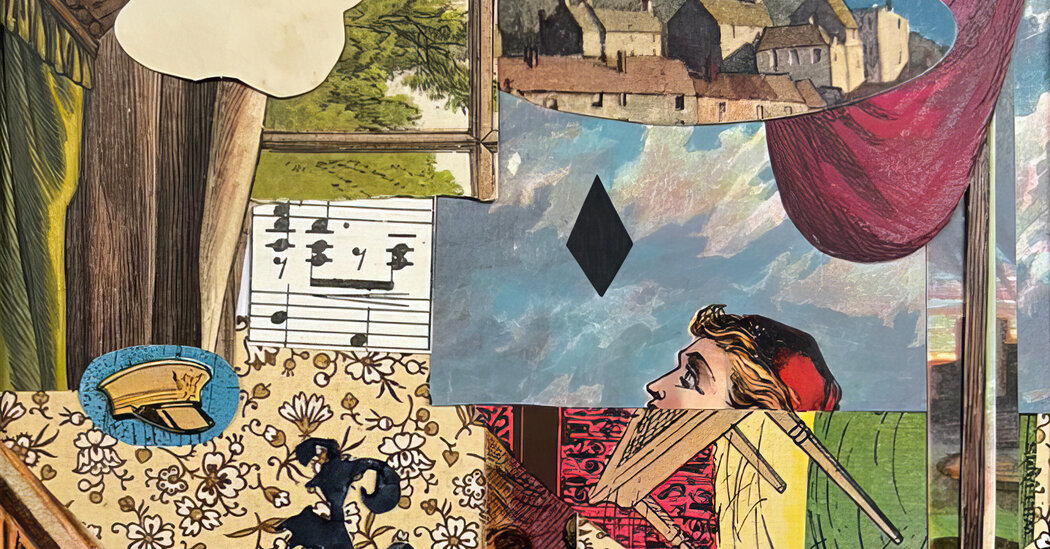
Mathias Énard’s new novel, “The Annual Banquet of the Gravediggers’ Guild,” considers the jumble of life in a variety of stories and styles.
THE ANNUAL BANQUET OF THE GRAVEDIGGERS’ GUILD, by Mathias Énard. Translated by Frank Wynne.
To fully appreciate what Mathias Énard is up to in his new novel, “The Annual Banquet of the Gravediggers’ Guild,” it helps to know about the 16th-century French literary genius François Rabelais and his bawdy five-volume masterpiece, “Gargantua and Pantagruel.” A tale of giants who roam the French countryside having drunken adventures and upsetting social norms, Rabelais’s work has been a wellspring of laughter through much of Western literary history, inspiring writers for centuries, though these days he is probably more referred to than read.
In the contemporary United States, at least, Rabelais’s legacy persists mostly in the work of the Russian literary theorist Mikhail Bakhtin, whose 1965 study “Rabelais and His World” introduced concepts that are still popular in literary and art criticism. “Carnivalesque,” “grotesque,” “dialogic”: Whenever we talk about art that transgresses boundaries, joyfully upends hierarchies, promotes multiplicity over authoritarianism and celebrates the abundance of the human spirit, we have entered Rabelais country.
David Mazon, the 30-year-old anthropologist at the center of “The Annual Banquet of the Gravediggers’ Guild,” has also entered Rabelais country, in more ways than he knows. Having moved to the countryside on an academic grant to study regional French culture, he notes in his diary that he “crossed the boundary into the Vendée and happened on an island, where … stood … the abbey that inspired Rabelais.”
As it happens, he has brought along a copy of “Gargantua and Pantagruel,” which he’s been meaning to read, though when he drunkenly picks it up that night, it proves “pretty unintelligible.” He is a comically self-centered young man, more absorbed in his own ideas than in learning about anyone or anything else.
Mazon’s diary continues as he settles in and starts to study the local people. The characters he meets are much more modern and sophisticated than he anticipated, but once he gets over his disappointment, he finds that he actually enjoys country living.
At this point, the novel gets up from the table and walks across the room, abandoning Mazon and his diary not just for different stories, but for different modes of storytelling, moving through centuries of history in the village and surrounding region.
First comes a four-page “song,” as Énard calls it, set in the 19th century, about a cobbler’s infatuation with a young woman, and her sudden death. Then the scope radically expands as we enter a long lyrical account of the transmigration of the souls of all the townspeople, and all the different lives they have inhabited.
There is Lucie, a farmer and climate activist, who was previously a Protestant victim of Louis XIV and a French soldier in World War I. There is Father Largeau, a sexually inhibited abbé whose soul, upon his death, enters a wild boar and finally gets to copulate (with a sow). There are at least a dozen others, souls migrating back and forth in time, their stories coming too quickly for any individual life to occupy our attention for very long, so that the real story becomes history, the fluidity of time, the democratizing powers of death, and — through a stew of Buddhist, Christian and Islamic philosophies — the cyclical jumble of life.
This is Énard at his best, calling to mind the erudite historical sweep of his 2008 debut, “Zone,” which won numerous French prizes despite being written as a single 500-page sentence, and his 2015 novel “Compass,” which won the Prix Goncourt and was shortlisted for the Man Booker International Prize.
Then we get another “song,” and another installment of the transmigration stories. By now the book has established itself as what Bakhtin called a “carnivalized novel,” characterized by the fluid crossing of boundaries and the brash juxtaposition of genres — Frank Wynne’s translation is award-worthy for the ease with which it moves between them — when suddenly Rabelais resurfaces for the centerpiece, a 77-page homage to “Gargantua and Pantagruel.”
It is the novel’s most surprising turn, and most ambitious, and, for me at least, its weakest. Readers unfamiliar with Rabelais’s classic may wonder why they have suddenly been pulled out of an already fluid reality and plunged into a high-farce pageant of droll toasts, pompous recitations of classical philosophy, impossibly excessive eating and vulgar jokes, while Rabelais lovers may be disappointed that the whole thing is not nearly droll, pompous, excessive and vulgar enough.
On the far side of this centerpiece, the novel mirrors itself, returning in reverse order through its various narratives, revisiting their stylistic variety and rounding out their stories. By the time we arrive back in Mazon’s diary, much has happened. Mazon’s life has been upended, and as a person he has grown and changed. There is a sense of shared melancholy, the feeling of having arrived together at a journey’s end, though Mazon’s journey has happened mostly away from us, in the space between diary entries, while we were off on a much more fantastical, historical, existential and unabashedly unconventional trip.
THE ANNUAL BANQUET OF THE GRAVEDIGGERS’ GUILD | By Mathias Énard | Translated by Frank Wynne | New Directions | 419 pp. | Paperback, $19.95
